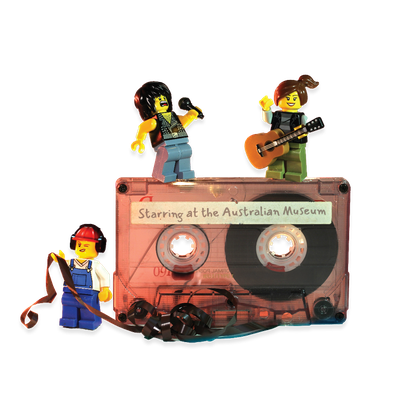Your search returned 2115 results
By Page Type
By Tag
- fish (966)
- blog (696)
- fishes of sydney harbour (401)
- First Nations (299)
- Blog (236)
- AMRI (169)
- archives (164)
- Eureka Prizes (146)
- Aboriginal and Torres Strait Islander (135)
- insect (126)
- Ichthyology (124)
- geoscience (109)
- minerals (102)
- climate change (99)
- podcast (94)
- Fish (91)
- Anthropology (89)
- International collections (80)
- Minerals Gallery (78)
- wildlife of sydney (78)
- Labridae (77)
- frog (74)
- gemstone (70)
- photography (66)
- history (64)
- Mollusca (60)
- gem (59)
- staff (59)
- Birds (56)
- Gems (56)
- Indonesia (56)
- education (56)
- shark (55)
- AMplify (54)
- people (53)
- earth sciences (50)
- exhibition (50)
- past exhibitions (50)
- Gobiidae (48)
- sustainability (46)
- Pomacentridae (45)
- Serranidae (44)
- lifelong learning (42)
- science (42)
- Earth and Environmental Science (41)
- Syngnathidae (41)
- Ancient Egypt (40)
- Bali (40)
- bird (40)
- dangerous australians (40)
-
AM Privacy Statement
https://australian.museum/privacy/The Australian Museum is strongly committed to protecting your privacy while interacting with our websites and mobile apps.
-
Dr John William Evans, Director 1954-1966
https://australian.museum/about/history/people/dr-john-william-evans-director-1954-1966/Dr John Evans helped transform the Australian Museum into an innovative and contemporary scientific institution.
-
Care of Stick Insects
https://australian.museum/learn/animals/insects/care-of-stick-insects/Stick insects or phasmids eat leaves and resemble leaves or sticks.
-
Fellows and Grant Recipients Details about fellowships for postdoctoral scientists
https://australian.museum/get-involved/amri/lirs/lizard-island-fellows/The Lizard Island Reef Research Foundation and its donors support numerous research programs at Lizard Island.
-
Research Projects 2000
https://australian.museum/get-involved/amri/lirs/research-projects-and-participants-2000/The following research projects were carried out during 2000. Project leaders who are postgraduate students are indicated with an asterisk (*).
-
Place names chart
https://australian.museum/learn/cultures/first-nations-collections/sydney/place-names-chart/A chart of place names for the Aboriginal People of Coastal Sydney section, including current place names, references and historical names and descriptions.
-
Australian Museum Copyright
https://australian.museum/copyright/This website contains information and media where copyright is held by the Australian Museum as well as other people or organisations.
-
Australian snakes image gallery
https://australian.museum/learn/animals/reptiles/australian-snakes/Australia has nearly 200 known species of snake, only 25 of which are considered potentially deadly. Explore images of Australian snakes.
-
Australian turtles image gallery
https://australian.museum/learn/animals/reptiles/australian-turtles/Australian turtles include the Mary River Turtle, sea turtles and long-necked turtles.
-
History of Lizard Island
https://australian.museum/get-involved/amri/lirs/history-of-lizard-island/Download the publication "Lizard Island Research - a partnership".
-
Discover more
2025 Australian Geographic Nature Photographer of the Year
Special exhibition
Free entry
Now open -
Discover more
Unfinished Business
Special exhibition
Free entry
Now open -
Discover more
Wansolmoana
Permanent exhibition
Free entry
Open daily -
Find out more
Burra
Permanent kids learning space
Free entry
10am - 4.30pm![]()
-
Discover more
Minerals
Permanent exhibition
Free entry
Open daily![]()




